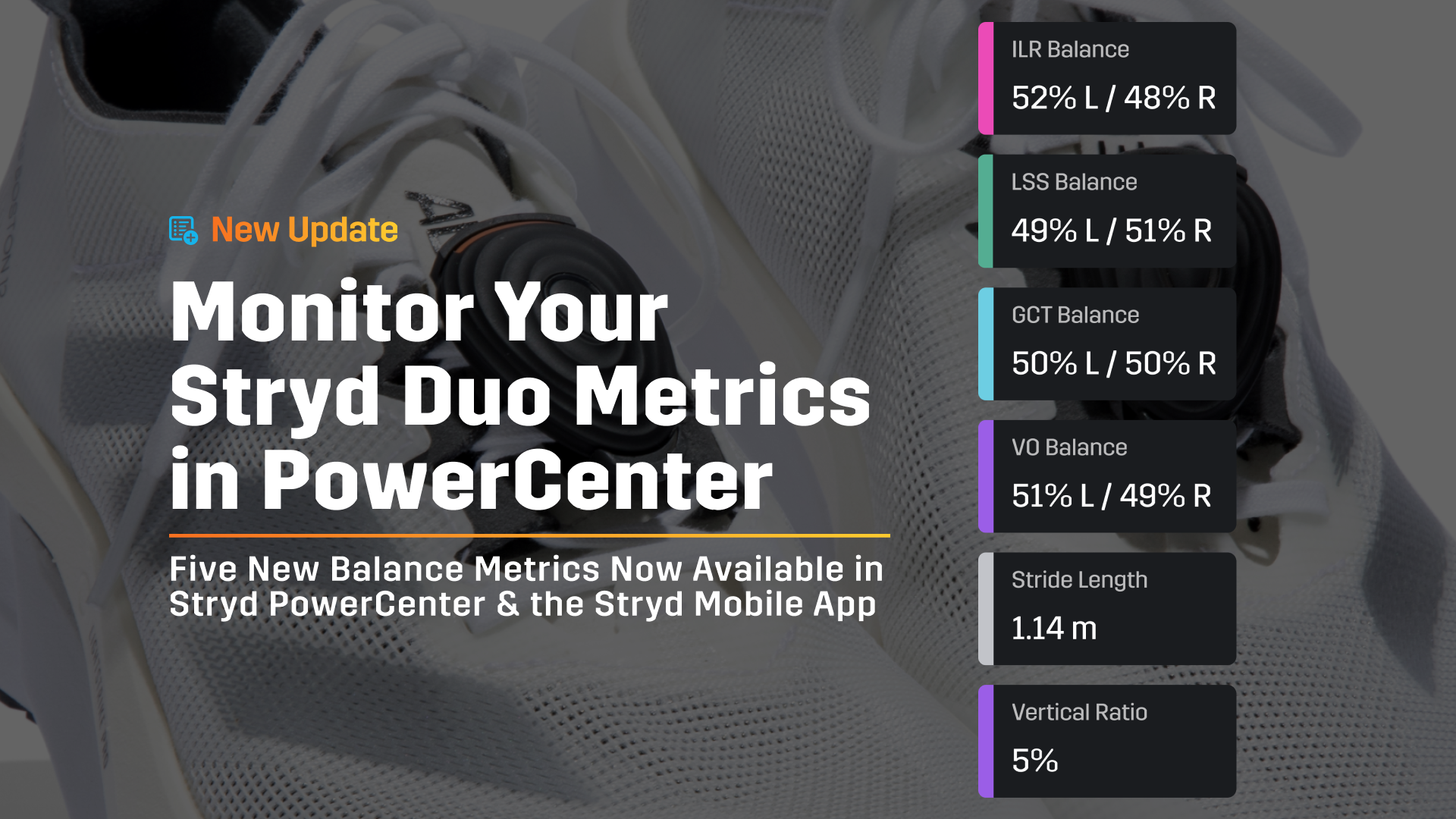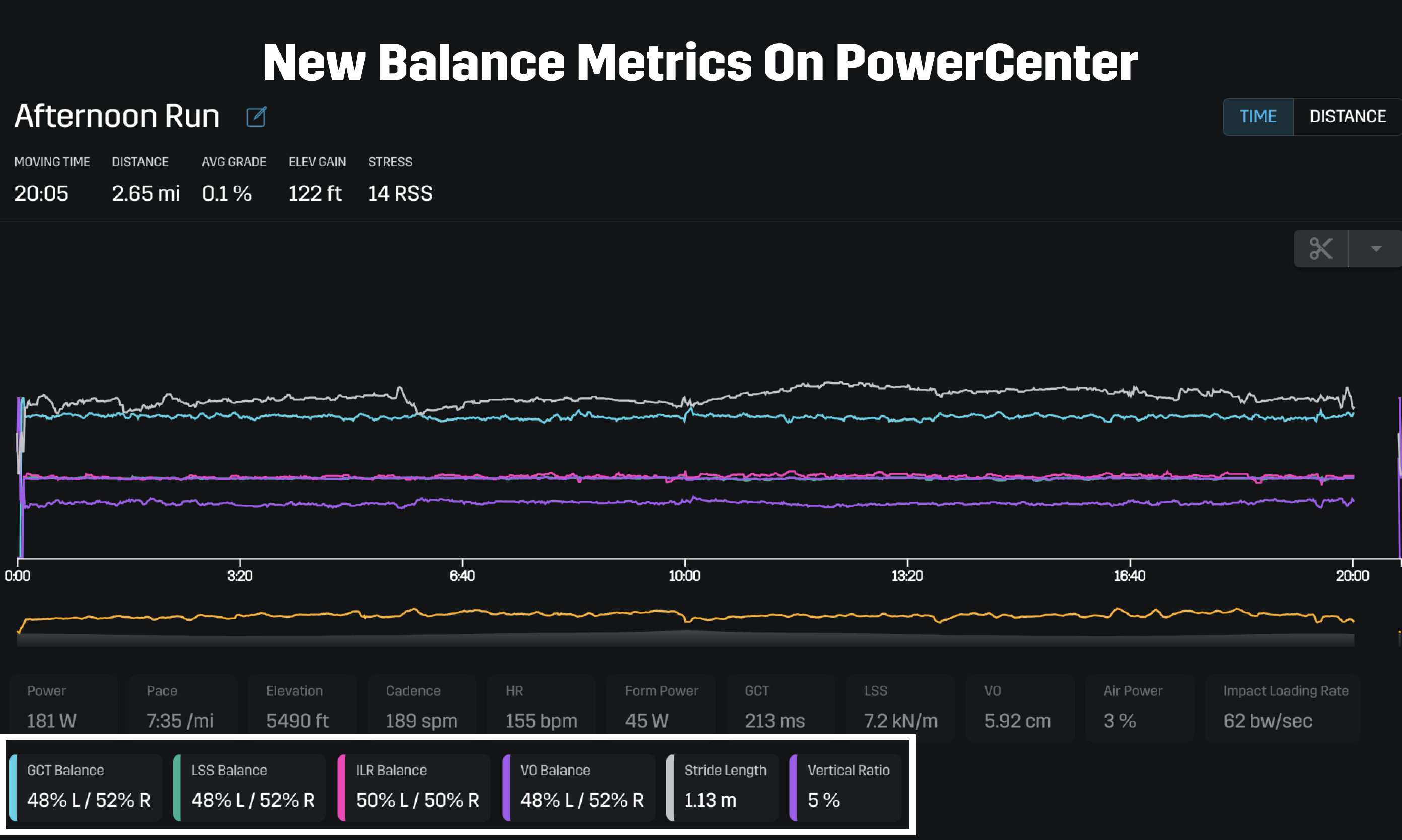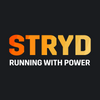Update: New Stryd Duo Balance Metrics Now Available in PowerCenter

Today, we are thrilled to announce that the new Stryd Duo balance metrics, tracking the differences between the left and right sides of your body, are now available in the post-run screen on PowerCenter.
You can now monitor these metrics in both PowerCenter and the mobile app to track your running trends over time and understand quantitatively what works best for you.
Let’s review the new metrics available with Stryd Duo!
Ground Contact Time Balance
Ground Contact Time (GCT), or Ground Contact, is the amount of time per stride that a runner's foot is touching the ground, in milliseconds. The starting trigger of a runner's ground contact time will vary depending on the runner's gait (heel-strike versus midfoot-strike versus forefoot-strike) but will always end at toe-off (full body removed from the ground, now in the swing phase of the gait cycle).
Ground Contact Time Balance from Stryd Duo reports how much longer or shorter one foot remains on the ground relative to the other, in terms of a percentage.
Vertical Ratio
Vertical Ratio is calculated by dividing the vertical oscillation by their stride length. It is expressed as a percentage.
Vertical Oscillation Balance
Vertical Oscillation (Vert. Osc.) is the vertical movement of a runner's center of mass between steps when running. A human's center of mass is typically at the pelvis or hip, so an easy way to think about vertical oscillation is the vertical rises and fall of a runner's pelvis over one gait cycle (expected minimum vertical position at mid-stance of ground contact, expected maximum vertical position during float period). Typical Vertical Oscillation values will range from 3-15cm.
Vertical Oscillation Balance from Stryd Duo reports how much higher or lower one side of the body rises relative to the other, in terms of a percentage.
Leg Spring Stiffness Balance
Leg Spring Stiffness is a model of elastic energy in the leg, assuming it acts like a spring. It is the maximum vertical force a person generates in a step divided by the displacement during ground contact time.
Leg Spring Stiffness Balance from Stryd Duo reports how much more or less Leg Spring Stiffness is modeled on one side vs the other, in terms of a percentage.
Impact Loading Rate Balance
Impact Loading Rate is the initial rate of increase in vertical (or perpendicular) force as a runner contacts the ground with their foot. It is reported in the units of body weight per second (bw/sec). This is an overall metric of how much load is being applied to the lower body over time. Higher values mean force is being applied at a faster rate. Lower values mean force is being applied at a lower rate.
Impact Loading Rate Balance from Stryd Duo reports how much more or less Impact Loading Rate is being exerted on that side of the body by the ground.
Start Monitoring Your Stryd Duo Metrics Today!
The new Stryd Duo + Stryd Footpath features are available. You will need two Next Gen Stryd pods (hardware model 26 or higher) to get started.
Please follow these steps:
1. Update to the latest version of the Stryd iOS app (> 8.1.9) or Android app (> 8.13.47)
2. Tap here to Get Started With Stryd Duo
3. Go for Your Run with Stryd Duo
4. Upload your run data and see your balance metrics in the post-run screen on Stryd PowerCenter
5. Sync your Stryd Footpath from Stryd Duo & View it on Stryd PowerCenter
Have more questions on Stryd Duo + Stryd Footpath? Tap the button below to access our help center.
Get Your Stryd Duo Today!
Ready to get started with Stryd Duo and Stryd Footpath?
Check out the Stryd Duo + Membership bundle at the Stryd store to place your order today.


